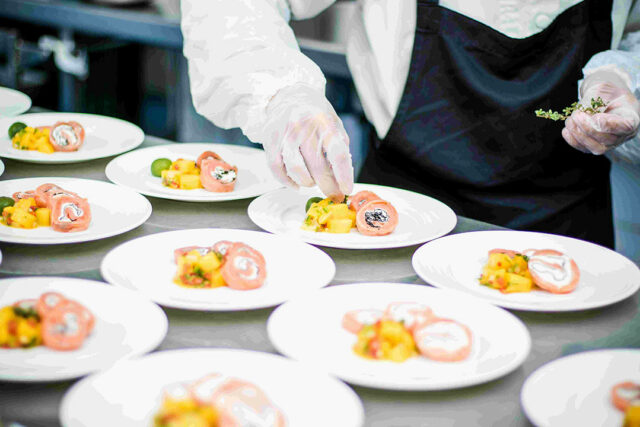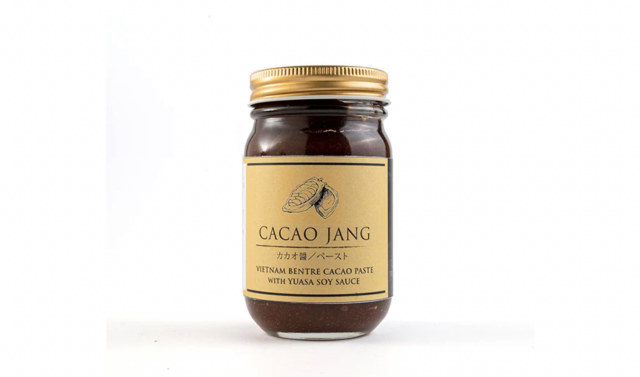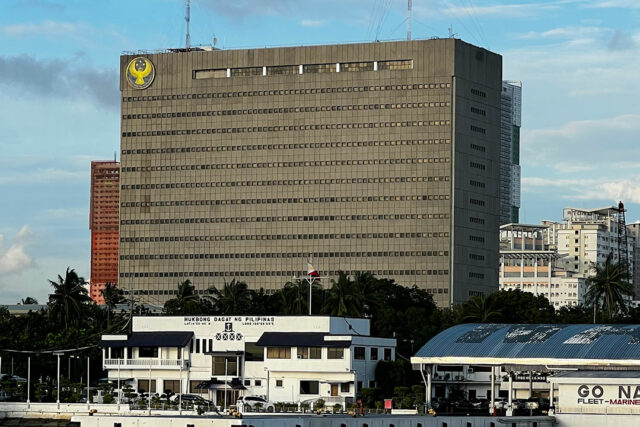THE RELATIVELY free days of the Holy Week break culminate on Easter Sunday, and we’ve got a list of fun, family-friendly activities to do that week.
‘Egg-citement’ at The Peninsula Manila
ON EASTER Sunday, March 31, The Peninsula’s youngest guests can delight in egg-cellent Easter activities in the Rigodon Ballroom, from face painting and trace and color classes, to pin-the-bunny’s ear games, magic shows, and balloon domes. Of course, Easter would not be complete without a visit from the Easter Bunny who will help children fill their Easter baskets with eggs hidden in the Egglandia Maze. Children from one to 12 can join The Peninsula Egglandia Egg Hunt and Merienda Buffet that takes place on Easter Sunday from 2 to 5 p.m. The merienda buffet will be served in the nearby Garcia Villa room. Ticket prices are P5,000 (one child 12 years and below and one adult), with P2,800 for an additional child or adult. Meanwhile, Afternoon Tea at The Lobby has been reimagined for Easter with spring- and Easter-inspired sweet items. Highlights include a White Chocolate Mousse with Strawberry Confit, which has been made to look like bunny ears, and a Mango and Coconut Opera whose mango flavor complements the almond aroma. The selection of savory items features an array of premium ingredients, including Chorizon in a Piquillo Pesto Cream Ciabatta, Egg Salad and Cucumber Tartlet, and Roast Beef Salad and Fig Jam in a Crispy Onion-Mustard Baguette. The rest of the holiday can also be spent within the hotel with the Peninsula Easter Egg-venture Escapade room package, starting at P16,5000 for a Deluxe Room (subject to VAT, 10% service charge, and 12.6% local taxes). The hotel also offers a special Easter Brunch Buffet at Escolta on Easter Sunday at P2,500 for children below 12, and P4,990 for adults. Take the Easter fun home with you with the Peninsula Chocolate Golden Easter Egg: a four-kilo limited-edition Peninsula Chocolate Golden Easter Egg that contains prizes within. Lucky winners will receive an overnight stay in an Executive Suite, a bottle of Peninsula Champagne, a P5,000 gift certificate, or a Peninsula Bear, and many more. Only 30 limited-edition Peninsula Chocolate Golden Easter Eggs are available for P6,000. For inquiries, call The Peninsula Manila at 8887-2888, ext. 6630 or e-mail reservationPMN@peninsula.com for Room Reservations or ext. 6694 or e-mail diningPMN@peninsula.com for Resaurant Reservations, or visit peninsula.com.
Raging Bull Burgers goes fishy
EVEN the Raging Bull has to tone it down for Easter, presenting the Good Catch, a spiced and crispy fried pollock fish fillet drizzled in tartar sauce, available this Lenten season. The fish sandwich is available from March 18 to 31 and is topped with a tomato-shallot-and-coriander relish and romaine lettuce. Good Catch is available for P380 at all Raging Bull Burgers branches: Shangri-La The Fort, The Rise Makati, and Shangri-La Plaza.
‘Eggstra’ savings at Holiday Inn and Suites Makati
HOLIDAY INN and Suites Makati has Easter offers featuring special room rates, starting at P5,200++ for stays from March 22-31. Guests staying from March 29 to 31 will receive a complimentary ticket to the “Hoppy Hues” Easter Activity, along with a buffet breakfast, starting at P6,600++. Kids 12 years old and below can stay and eat for free. Guests can also treat themselves to the Easter Lunch Buffet, priced at P2,588 net. Guests enjoy “eggstra” savings of 22% when they book until March 23. Early birds can enjoy a 10% discount on Hoppy Hues Easter Activity on March 31 for tickets purchased from March 15 to 22. The regular rate is P1,900 net, which includes a bunny drip-painting workshop by Paint-It-Fun and Flying Tiger Copenhagen plus kid’s meal, awards, prizes, and lootbags. For inquiries and reservations, call 7909-0888 or e-mail hism.reservations@ihg.com.
Sheraton Manila Bay’s Easter paradise
THE SEVENTH floor of the Sheraton Manila Bay will become an Easter paradise with an Easter brunch buffet and live performances and games. Little ones can embark on an adventure as they search for hidden eggs within the events hall. Prizes await the lucky explorers, ensuring an “eggciting” experience on March 31. For a relaxing staycation, avail of the F.A.M. at the Bay (Easter Edition) Room Package on March 29 to 30 where two adults and two kids below 12 years old can enjoy a breakfast buffet, cooking classes for two kids, and an exclusive offer of P1,200 net per person for the dinner buffet during their stay. Bookings from March 25 to 31 fall under the Easter Explorer Room Package which has the same inclusions for two adults and two kids under 11 years old with additional access for two persons to the Easter Sunday activities and the self portrait studio. For inquiries, call 5318-0788 or e-mail sh.mnlsb.fnb@sheraton.com.
Marco Polo Ortigas hatches adventure
THIS EASTER Sunday, Marco Polo Ortigas Manila hatches a family adventure for kids and kids at heart, with holiday offers to match the festive season. Enjoy a lunch buffet at Cucina, whose spread includes a grazing table of premium meats and cheeses, fresh prawns, crabs and half-shell mussels on ice, sushi and sashimi, together with an array of garden greens. The carving station features 24-hour braised beef shank with black truffle, tender lamb confit, salt crusted lapu-lapu, and Kurubota pork belly. Seafood tempura and baked oysters with cheese fondue rounds up the spread, along with Easter-themed desserts. Lunch service starts at noon to 2:30 p.m., at P3,400 net per person. Let the kids join the Great Marco Polo Easter Safari on March 31 at Ballroom A from 2 to 5 p.m. for an afternoon filled with a magic show, balloon twisting, face painting, and an egg hunt. Tickets are priced at P1,500 net for children up to 12 years old, and P750 net for accompanying adults, inclusive of heavy snacks. Café Pronto has chocolate goodies for Easter gifts: from a box of delicately hand-painted chocolate eggs to a variety of animal-shaped confectioneries. Available until March 31. Stay at Marco Polo Ortigas Manila this season for two nights, with buffet breakfast for two at 10% off. Get the best available rates, and 15% off food and beverages from restaurants and bars. GHA Discovery members get an additional 10% off the room rate, and a total of 25% discount on food and beverages. Book the Spring Campaign promotion through https://bit/ly/SpringCampaign2024 or call 7720-7777 for more information and reservations.
Shangri-La The Fort, Manila has treats for Every-bunny
HOP on to Shangri-La The Fort, Manila for sweets, feasts, or a quick getaway this Easter. Its various restaurants have special offers for the season. Bake House’s Hoppingly Sweet Treats, roll out on March 18 to 31, at the hotel’s special lobby counter and online at Shangri-La Boutique. Easter cakes start at P1,975 and other Easter goodies start at P160. High Street Café’s Egg-citing Feast will be available for lunch on March 28 to 31 at P2,700 net per person. It’s an Opulent Tea Soirée at High Street Lounge, with a surprise twist from Opulence featuring their Versace by Rosenthal etagere and plates. Available from March 18 to 31 for P2,500 net for two persons. Canton Road has two set menus for the occasion: The Flavors of Spring, good for five persons, and Easter with a Cantonese Flair, good for 10 persons, available for P18,888 and P46,888 net, respectively. The set menus are available from March 25 to 31. Samba offers Semana Santa à la carte specials from March 25 to 31, featuring broiled Boston lobster, river prawns, grouper ceviche, and more. On Easter Sunday, March 31, kids are invited to join Boni the Bull at Adventure Zone for an egg hunt, cookie decorating session, special games with prizes, papier mâché bunny painting, and face painting. These are available at P1,200 for Adventure Zone members, and P1,500 for non-members. For more information on the Easter egg hunt, visit https://www.shangrilafortexclusives.com/; for dining arrangements, e-mail eats.slfm@shangri-la.com.
Alabang Town Center holds Eggylimpics
ALABANG Town Center is hatching an egg-cellent Easter celebration. Running from March 30 to April 1, the Easter Egglympics 2024 bursts with activities to keep kids on their toes. The action goes down at the Egglympics Arena where there will be a digital track run and a basketball shootout, noodle soccer and noodle spear throw. An Easter Egglympics stub (earned receipts, single or accumulated, worth P3,000 from any store) gets a child an armband and a loot bag filled with treats. The Cheer Cam will also capture their cheering moment, displayed on a mini-LED billboard for everyone to see. For those who like surprises, the Easter Egg Vending Machine is like an Easter egg hunt, but with a high-tech twist. Exchange receipts, single or accumulated, worth P2,000 for some Giant Egg Coins to start playing. Both the Egglympics Arena and Easter Egg Vending Machine are exclusive to kids between three to 14 years old. For more relaxing activities, swing by the Easter Egg Painting station or the Soft Play Area, entrance to which is granted with a P1,500 and P1,000 single or accumulated receipts, respectively. The activities are available between March 25 to April 1. Follow @alabangtowncenter on Instagram for updates.
Raging Bull Burgers goes fishy
EVEN the Raging Bull has to tone it down for Easter, presenting the Good Catch, a spiced and crispy fried pollock fish fillet drizzled in tartar sauce, available this Lenten season. The fish sandwich is available from March 18 to 31 and is topped with a tomato-shallot-and-coriander relish and romaine lettuce. Good Catch is available for P380 at all Raging Bull Burgers branches: Shangri-La The Fort, The Rise Makati, and Shangri-La Plaza.
Pizza Hut’s flavorful seafood options
FOR THE Lenten season, Pizza Hut offers seafood dishes, available until 2 p.m. every day (plus a pizza combo that is available anytime). First is the Seafood Lunch for 2 set, which includes one Regular Seafood Supreme Mega Crunch Pizza, one Regular Pasta Shrimp Arrabbiata, one order of Mozzarella sticks, and two servings of Pepsi for P699. For solo diners there is the Seafood Lunch A set, which comes with one Regular Pasta (either Shrimp Arrabbiata or Shrimp Ala King) and one serving of Pepsi for P249; and Seafood Lunch B set, which is available exclusively for dine-in. It comes with a choice of either one Personal Cheese Lovers Pan Pizza or one Personal Veggie Lovers Pan Pizza, two Salad Rolls (a choice of either Shrimp or Crab), and a Pepsi for P199. Finally, there’s the Seafood Pizza Pair, available all day, every day. It comes with one Seafood Supreme Mega Crunch Pizza and one Cheese Lovers Pan Pizza for P599 for Regular and P899 for Large. The Seafood Lunch for 2, Seafood Lunch A, and Seafood Pizza Pair combos are available for dine-in and takeout in all Pizza Hut stores nationwide; and for delivery via the (02) 8911-1111 hotline, www.pizzahut.com.ph, the Pizza Hut mobile app, and Pizza Hut’s official delivery partners GrabFood and foodpanda (prices may vary).
















